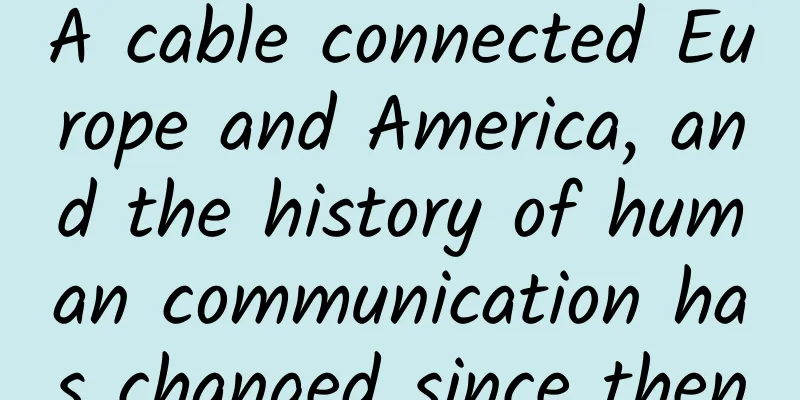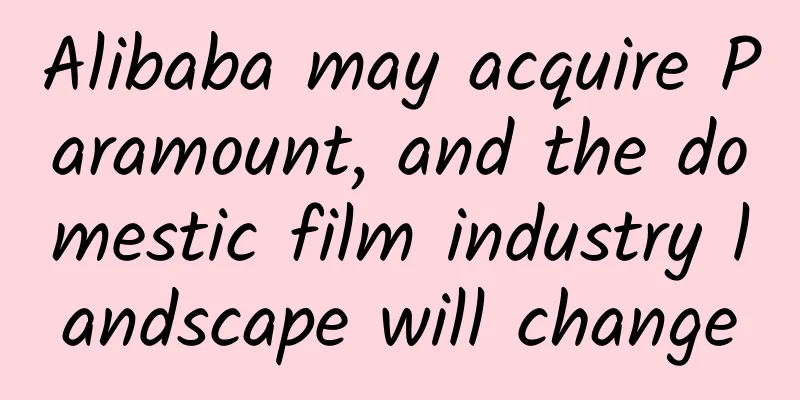A cable connected Europe and America, and the history of human communication has changed since then

|
Today, we can no longer imagine a world without mobile communications and the Internet. Looking back at history, this is the result of the collaborative efforts of generations of scientists, engineers, and entrepreneurs. Many scientists have made their mark in history, and the construction of industries is inseparable from "the operator or organizer of adventurous undertakings" - this is the original meaning of entrepreneur. This article mainly tells the legendary story of the construction of transatlantic communications (wireless communications will be introduced in the next article), paying tribute to the scientists and entrepreneurial spirit that never fade. Written by Yang Weifeng (radio management practitioner), Wang Feng (associate professor at Hebei Science & Technology Normal University) Great ideas are often like fairy tales Since the 1760s, the Industrial Revolution initiated by Britain has greatly promoted the development of science and technology and the accumulation of wealth. With the development of electromagnetism and the application of wired telegraph technology, by the mid-19th century, wired telegraph lines had spread across Europe, Asia and North America, greatly reducing communication costs. Merchant ships from Europe to North America frequently traveled between the east and west coasts of the Atlantic Ocean. At that time, a one-way voyage still took about 10 days. Timely communication between the two sides was very necessary, and the transatlantic communication business had huge business opportunities. In January 1854, Frederick Newton Gisborne went to New York to seek support after his company went bankrupt due to insufficient funds after laying a telegraph cable from Newfoundland to the United States. He found Cyrus West Field, a young American tycoon, and proposed to raise funds to build a telegraph line between St. John's, Newfoundland and New York, USA. But Field, who had a broad vision, believed that it was a bit uneconomical to invest in this project just to shorten the communication time by one day. If a cable was laid from Ireland to Newfoundland, the communication time would be shortened by more than just a few days - this cable would connect Europe and North America, and the project would be of extraordinary significance. The idea of transatlantic telegraph communication was thus proposed. Field made his fortune in the paper industry and was an absolute layman in the telegraph industry. At first, he knew almost nothing about the science and technology involved in this project, which was his luck. In fact, it was precisely because he didn't understand that he didn't give up this great idea - in the eyes of others, this was simply a fantasy and an impossible task. This unprecedented international cooperation project, in addition to involving many factors such as politics, economy, military, and diplomacy, also faces many scientific, technological, process, and material problems. At that time, the terrestrial telegraph industry had already begun to emerge, and Europe and the United States had deployed several shorter submarine cables. [Note: In 1851, John Watkins Brett laid the first submarine cable in the English Channel, connecting the United Kingdom and the European continent. ] The longest submarine cable in operation is only 177 kilometers long and no more than 550 meters deep. The cable laid across the Atlantic Ocean is more than 3,200 kilometers long and up to 4,750 meters deep. The long distance of the transatlantic cable poses some unique challenges to communications, especially because transmission theory and cable design are still controversial. This difficulty is like when someone saw the Soviet Union launch the first artificial earth satellite in 1957, they wanted to organize a team to explore the moon. Lucky people get valuable support Samuel Morse, the inventor of Morse code and a pioneer in the construction of American land telegraph lines, had envisioned a telegraph line crossing the Atlantic Ocean as early as 1843. When Field asked for his opinion, he enthusiastically supported the idea. Although Morse was already well-known in the telegraph industry, he was actually a painter and did not have a solid theoretical knowledge of electricity. Field also wrote to Matthew Fontaine Maury, an American oceanographer and naval officer, to seek his opinion. Maury believed that the submarine plateau terrain between Newfoundland and Ireland was very suitable for laying submarine cables and provided him with accurate oceanographic mapping data. This was a great help to Field! In 1854, Field, determined to win, persuaded four other wealthy men to join the so-called Cable Cabinet, a group of entrepreneurs, investors, and engineers. The five men decided to raise $1.5 million to invest in this great cause, which was a staggering amount of money at the time (the federal government's total expenditure that year was just over $58 million), but it turned out that this amount was far from enough. They took over the Newfoundland Telegraph Company from Gisborne, assumed its $50,000 debt, and established the New York-Newfoundland-London Telegraph Company. The Newfoundland Parliament hoped that this project would promote the economic development of Newfoundland, so it soon issued them a charter, granting the company a 50-year franchise for telegraph lines on the island of Newfoundland. In 1855, these investors established the American Telegraph Company and began to acquire other companies for integration. In October 1856, Field established the Atlantic Telegraph Company (ATC) in London. In 1857, after obtaining financing in the United Kingdom and support from the American and British governments, the company began laying the first transatlantic telegraph cable. In May 1895, Daniel Huntington, a famous American portrait painter, painted "The Planners of the Atlantic Cable" (Cyrus W. Field is the second from the right) for the New York State Chamber of Commerce. The canvas size is 87 inches by 108¼ inches. Image source: New York State Museum collection. Failure is the mother of success Field's firm determination and strong execution were the core elements of his success, but the hasty start of the project was the biggest mistake of the entire project. At that time, electrical engineers and theoretical experts had different opinions on this unprecedented project and could not reach a consensus. The feasibility test should have been passed before construction, but the company's directors made decisions mainly based on time and speed. Because seawater is conductive, when a telegraph cable is immersed in seawater, its capacitance will increase by about 20 times, and the signal transmission speed will be significantly reduced, resulting in communication delays. A group represented by Morse, British physicist Michael Faraday, and the company's first chief electrician Edward Whitehouse believed that the conductors of submarine cables should be as thin as possible to limit signal delays. The thicker the cable, the more electricity is needed to fill it. This is similar to a water pipe, which must be filled before water can flow out from the other end. The other design was represented by William Thomson. Through the study of instantaneous current, he derived the "square law", that is, the signal delay is inversely proportional to the square of the cable length. Thomson suggested using a large diameter cable core made of the purest copper to reduce resistance. His view won the approval of chief engineer Charles Bright. However, this cable design was much heavier than the Morse-Faraday plan (the metal cable core and gutta-percha insulator should weigh 392 pounds per nautical mile) and more expensive, so the Atlantic Telegraph Company did not adopt this plan. The copper core of the final cable weighed only 107 pounds per nautical mile, far from the 392 pounds required by Thomson and Bright. After Thomson conducted a partial test on the cable, he was even more shocked: the purity of the copper used in the cable core was far from enough, and the conductivity was very uneven, with some parts conducting twice as much as other parts. William Thomson in 1902 Photo credit: Photos.com/Thinkstock The diameter of the completed cable is only as thick as a person's index finger. The cable core is composed of 7 copper wires, and the copper core is wrapped with three layers of gutta-percha. Outside the glue layer, it is wrapped with linen soaked in a mixture of asphalt, tar, linseed oil and wax oil. The sheath of 18 strands of steel wire (7 iron wires per strand) is wrapped into a tight spiral. This cable can withstand a tensile force of several thousand Newtons. Thomson conducted in-depth research on the stress problem of the cable, established a set of stress theories for submarine cables, and published a related paper in the magazine "Engineer". In 1857, after obtaining financing in the UK and support from the governments of the United States and Britain, the Atlantic Telegraph Company began laying the first transatlantic telegraph cable. Ireland and Newfoundland, the two ends of the cable, are about 3,200 kilometers apart, the shortest distance between the European and American continents. At that time, no ship in the world could carry a 2,500-ton submarine cable for long-distance sailing in the wind and waves of the Atlantic Ocean, so two ships could only be hired to carry a part of the cable and join them at a certain location (after the first plan to lay the cable from Ireland to Newfoundland failed, the two ships were changed to meet at the center of the ocean, join the cable, and then lay it in the opposite direction). The British Royal Warship Agamemnon and the American warship Niagara each carried half of the cable to carry out the laying task. Unfortunately, the project failed twice, and the cable suddenly broke and was lost during the transportation of the ship. On August 4, 1858, the third attempt finally succeeded. On August 16, 1858, Queen Victoria sent a message to US President James Buchanan using Morse code. Although the speed was very slow - the 98-word congratulatory message took 16 and a half hours to send - the success made New Yorkers celebrate. However, the signal on the cable became weaker and weaker until it was completely interrupted. After three weeks, it was completely out of service. As a result, Field went from a "hero" to a "swindler" overnight and almost went bankrupt. In-depth investigation of the reasons for the failure <br /> In order to investigate the reasons for the failure of this major project, the British Economic Committee and the Atlantic Telegraph Company each appointed four members to form an "investigation committee". Among them were electrical experts Charles Wheatstone and William Cooke, who had obtained the British telegraph technology patent as early as 1837. This famous and voluminous report deeply analyzed the reasons for the failure, and the lessons learned from it led to a leap forward in the development of submarine telegraph technology and even electronic engineering technology. The report pointed out that one of the important reasons was the lack of unified units for measuring basic quantities such as current and resistance, and even these terms had not been standardized. In 1861, the British Association for the Advancement of Science established a Committee of Electrical Standards of the British Association based on the suggestions of Thomson, Bright and others to formulate unified standards for electrical units. Many years later, Thomson proposed the use of volts, amperes, farads and ohms as basic units of electricity at the International Electrical Conference held in Chicago in 1893. These international standards were officially adopted and are still used today. Mirror galvanometer produced by WJ George Company in the UK in the 1900s. Image source: Collection of Tsinghua University Science Museum. Another lesson was that the cable should be tested before laying, to check the conductivity and overall insulation of the cable. The investigation report concluded that the company had been too hasty in producing and laying the cable in 1857, which was mainly due to Field. Impulsiveness and drive were his strengths, but also his weaknesses as an entrepreneur. Whitehouse's stubbornness was also one of the direct reasons for the failure. He dismantled Thomson's delicate and flexible mirror galvanometer and installed a relay that he invented and patented. He also insisted on using a huge induction coil that could generate several thousand volts of voltage, rather than using a battery that could generate a more moderate voltage that could be measured by a mirror galvanometer. The "Investigation Committee" believed that the huge impedance of the 3,200-kilometer submarine cable caused serious signal attenuation and delay. Whitehouse increased the voltage beyond the cable's tolerance and burned the cable. Whitehouse defended himself fiercely at the hearing, and he also proved that Field did not give him time to do experiments. Faced with public doubts, abuse and slander, Field was not defeated. In 1865, he raised funds again and continued to fight for his ideal. At this time, the research on wired telegraph was more mature. For example, the mirror galvanometer invented by Thomson could read the signal attenuated 1000 times through the slight rotation of the small lens on the wire (optical magnification), which solved the problem of serious signal attenuation in the previous submarine cable. According to the opinions of Thomson and others, the company replaced the thicker cable to reduce the impedance of the cable core. In addition, the world's first giant ship "Great Eastern" had been built and happened to be idle. With the new telegraph technology, cable technology and this giant ship with a displacement of 22,000 tons, the previously extremely difficult things became much simpler. On July 23, the "Great Eastern" set sail and began another attempt by Field, but the cable suddenly broke when it was two days away from North America, and this fourth attempt failed again. Manufacturers' sample boxes of Atlantic cables in 1858, 1865 and 1866, with the cables becoming progressively thicker. 丨Image source: Photographed April 2009, Science Museum, London.( The happiness of success finally comes On July 27, 1866, good luck finally came, and the Great Eastern successfully completed the laying of the cable from Valentia, Ireland to Heart's Content, Newfoundland. The new cable had better performance and provided almost instant communication across the Atlantic. Later, the previously lost cable was salvaged and re-laid to make the Atlantic cable a double line, with a transmission speed 50 times faster than in 1858. In 1866, the British government knighted Thomson for his contribution to the laying of the Atlantic submarine cable. In 1892, in recognition of his outstanding achievements and scientific contributions in cable engineering and telegraph technology, Queen Victoria personally crowned him as the First Baron Kelvin, or Lord Kelvin. In 1867, Field received a gold medal from the United States Congress and a special prize at the International Exposition in Paris for his contributions to the laying of the transatlantic cable. "The old and new worlds are connected into a common world...the earth seems to beat with one heart." In his book "When the Stars Shine", Austrian writer Stefan Zweig regarded the laying of the Transatlantic cable as one of the 14 moments that influenced the progress of human civilization, and highly praised the entrepreneur Field's unyielding will. In 1858, the signal transmission speed of the Atlantic telegraph cable was several words per hour, and it reached 6-8 words per minute in 1866. By the end of the 19th century, Britain, France, Germany and the United States connected their cables to form a telegraph communication network, making the world a "smaller" place. Map of the Eastern Telegraph Company system, 1901. (ABC Telegraphic Code 5th Edition) People's desire for communication is endless. With the upgrading of communication technology, optical fiber with faster transmission speed and larger capacity has emerged and gradually replaced cables. There is also a key technological development in the history of communication - radio communication, which is also a great contribution of scientists and entrepreneurs. We will talk about it in the next article. Main references [1] John Steele Gordon. A Thread across the Ocean: the Heroic Story of the Transatlantic Cable [M]. New York: Harper Perennial, 2003: 46, 53, 102-110, 180-192. [2] History of the Atlantic Cable & Undersea Communications (from the first submarine cable of 1850 to the worldwide fiber optic network) see: https://atlantic-cable.com/ [3] The First Transatlantic Telegraph Cable Was a Bold, Beautiful Failure See: https://spectrum.ieee.org/the-first-transatlantic-telegraph-cable-was-a-bold-beautiful-failure [4] Historical figures of the IEC. See: This article is supported by the Science Popularization China Starry Sky Project Produced by: China Association for Science and Technology Department of Science Popularization Producer: China Science and Technology Press Co., Ltd., Beijing Zhongke Xinghe Culture Media Co., Ltd. Special Tips 1. Go to the "Featured Column" at the bottom of the menu of the "Fanpu" WeChat public account to read a series of popular science articles on different topics. 2. Fanpu provides a function to search articles by month. Follow the official account and reply with the four-digit year + month, such as "1903", to get the article index for March 2019, and so on. Copyright statement: Personal forwarding is welcome. Any form of media or organization is not allowed to reprint or excerpt without authorization. For reprint authorization, please contact the backstage of the "Fanpu" WeChat public account. |
>>: The "rain" on these planets is not water, but gems? Or iron?
Recommend
What effects will occur on the body when the stomach “quits” and goes offline?
[Written at the end of the article] In 1897, Carl...
In Microsoft's eyes, XBOX is actually such a role...
There is no doubt that in the battle for the next...
After measuring 12,000 moonquakes since the Apollo moon landing, humans have not measured any more for 43 years.
【Mobile software: Bo Ke Yuan】Since the Apollo moo...
Inventory of 20 practical tools for short videos: materials, operations, and editing
Currently, the short video industry has attracted...
Marketing and Promotion | Why is Guazi Used Cars so successful?
How did Guazi.com become a leader in the used car...
How to clean and disinfect your home? Save!
How to disinfect correctly after picking up a pac...
Jules Verne's novel predicted air warfare half a century in advance
Editor's Note Military science fiction has a ...
How to build a growth system based on user behavior?
This article is based on the "WHAT-HOW-WHY&q...
Webb telescope discovers mysterious galaxies that shouldn't exist
In February 2023, Nature magazine announced an im...
Android Accessibility Kit welcomes Camera Switches: Control your phone with facial expressions
[[417832]] There are many accessibility features ...
Tsinghua University Research: AI is 3,000 times faster than humans in planning urban space!
Today, human designers also have AI partners in t...
Operational methodology: How to carry out private domain operations well?
If public domain traffic is the ocean, then users...
Amazon Fire's ambition is not only to be an e-commerce company, but also a platform
Back in January 2007, Steve Jobs released the fir...
More than 10 million doses of COVID-19 vaccine have been administered! Here's how to find the nearest vaccination site
Since the implementation of the COVID-19 vaccinat...
Growth activity promotion matrix for online education!
Online education has developed rapidly in 2020 an...









